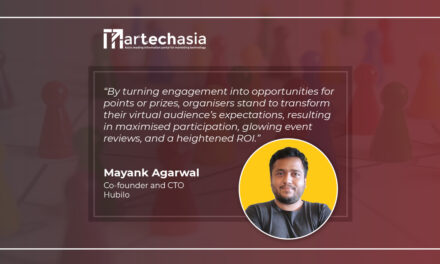In this exclusive interview with MartechAsia, Malcolm Koh, Director of CX Practice, Global Customer Engagement, Zendesk, shares how brands must realise that the consumers of today don’t see siloed departments when interacting with a brand – they see a single entity.
Although McKinsey reports that companies with the greatest overall growth in revenue and earnings receive a significant proportion of that boost from data and analytics, company leaders are still less involved in analytics efforts than digital activities. So if data is so important for agility and growth, leaders must be leading the charge.
Zendesk’s ‘Agility in Action Report’ shows how this holds true in APAC today: 80% of managers in Singapore agree that a culture of agile company leadership is what allows them to quickly adapt to customer and business needs.
Malcolm Koh, Director of CX Practice and Global Customer Engagement at Zendesk, shares in this interview his insights on why leadership must be the driving force in creating a data-driven agile culture and how an organisation’s internal agility translates to a connected customer journey.

What is Agile Data Leadership and why should marketing leaders take note of it?
When we talk about data, the narrative often surrounds how it can drive smarter decisions. In the realm of customer experience (CX), the data gathered around customer trends and triggers – coupled with team performance – can help to form a better understanding of what your customers really want, and how you can best deliver it. But this only works if the company has the right mindset, driven by its leaders.
Agile data leadership refers to senior leaders that are able to not only implement a strong data strategy but cultivate a company culture that truly believes in its value. By doing so, your team is empowered to leverage its insights to quickly respond to the changes in the market. Leaders that are able to grasp this will be the ones who are able to design teams, processes and products that stay productive and profitable through change.
Who should drive the data culture in an organisation: the CMO, the CEO or the CIO?
The case for everyone’s involvement is compelling – McKinsey reports that while companies with the greatest overall growth in revenue and earnings receive a significant proportion of that boost from data and analytics, company leaders are still less involved in analytics efforts than digital activities. If data is so important for agility and growth, then all hands must be on deck. But if responsibility has to be put on the shoulders of just one individual, it is important that they work with a cross-functional team, so that they can accurately capture the complete customer journey and understand how to optimise the process.
I’ll give an example of why this is important. I recently bought a new smartphone – and in doing this, the bank’s card marketing team correctly captured my moment of purchase, and suggested a three-month installment plan. It was also self-service and seamless to sign up, but only much later received a notification to contact the bank about the payment plan. I called as instructed, and after close to 10 minutes of waiting, menus, automation, self-service options and even being told to use the app, I was redirected to two different agents, who still didn’t have the answers I needed. The data point – expensive purchases prefer staggered payments – was correct, but the execution especially across internal business functions was not customer-friendly. This demonstrates the existence of data silos, and the importance of better integration across the entire customer journey.
Is there a connection between the internal agility of an organisation with the connected customer journey? How can this connection be strengthened?
My personal experience shared earlier really demonstrates the importance of the internal agility in cross-team collaboration, and its influence on the connected customer journey. Alignment and efficiency in interaction is important, and agile data leadership plays a role in strengthening this connection. Zendesk’s Agility in Action report shows that 80% of managers in Singapore agree that their company leadership fosters a culture promoting agility, which then allows quick adaptation to customer and business needs. In APAC, 80% of business leaders also agree that their organisations have relied heavily on analytics this past year to understand team performance. This paints a clear picture of how leaders must tap on data analytics to build dedicated, empowered, and cross-functional teams that are able to refine the complete customer journey.
What are the top trends in martech that you would like to highlight?
Marketing and CX are intrinsically linked; in order for businesses to create value from their customer relationships, they must prioritise a customer-centric foundation that shortens the path to value while elevating the overall experience. In this area, understanding and adapting to customer preferences is crucial to business success. For example, in response to the demand for self-service capabilities, business in APAC outpaced other regions in their increase of help center articles. When ticket volume went up, businesses in APAC added 23 additional help center articles on average, compared to 14 in other regions. Another key trend we are seeing is the demand for technologies that enable cross-channel integration. Almost 4 in 5 consumers in Singapore say they are more or much more likely to purchase from companies that keep track of customer information, preventing the need for customers to repeat themselves when communicating across channels.
How will key trends in new customer demands and behaviour shape the CX landscape for businesses next year?
Almost every customer trend culminates in a single truth: customer expectations will continue to rise, pushing businesses to be more proactive in meeting their needs. Already, we are seeing how disruptors in every industry are innovating to raise the standards of their products and services. The CX landscape will also be constantly evolving, led by the rapid development in customer expectations. For businesses to keep up with the volatility, they must build foundations and leverage tools that enable agility and flexibility in any situation.
A great example is how travel agency Klook had to pivot immediately when international travels were grounded almost overnight. Using a trove of customer data from Zendesk, Klook turned to a new direction of domestic travel and staycations and explored partnerships with local tourism authorities. Even as ticket volume soared above 78,000 per month, the team at Klook was able to reduce ticket handling time by 20%, creating a comprehensive knowledge base that gets upward of 6,000 hits per month. Klook shows how agility will pave the way for long-term resilience, despite continued uncertainty.
Any martech lessons you would like to share with your fellow CMOs and marketing leaders?
Observe, analyse, and try. Historical data gives performance over time and real-time data gives you the pulse on the ground, but these insights are wasted unless they are applied. Tap on the tools that empower and enable your teams, and boldly make decisions to try new things in the market while measuring and testing every outcome. Importantly, brands must realise that the consumers of today don’t see siloed departments when interacting with a brand – they see a single entity. That means that all teams must collaborate and align across the entire customer journey – from first impression, to conversion, to after-sales – to maximise consumer engagement and involvement. Your customers deserve the best, and you can only deliver if you are constantly looking to delight.

















